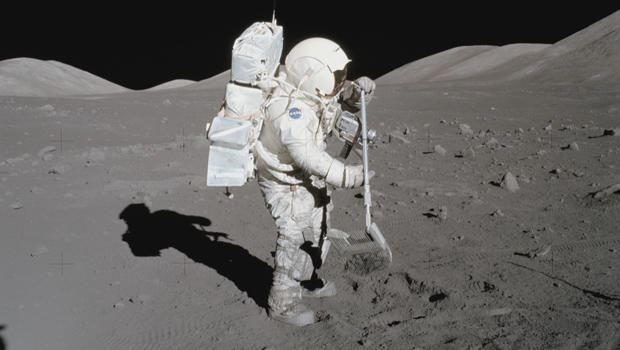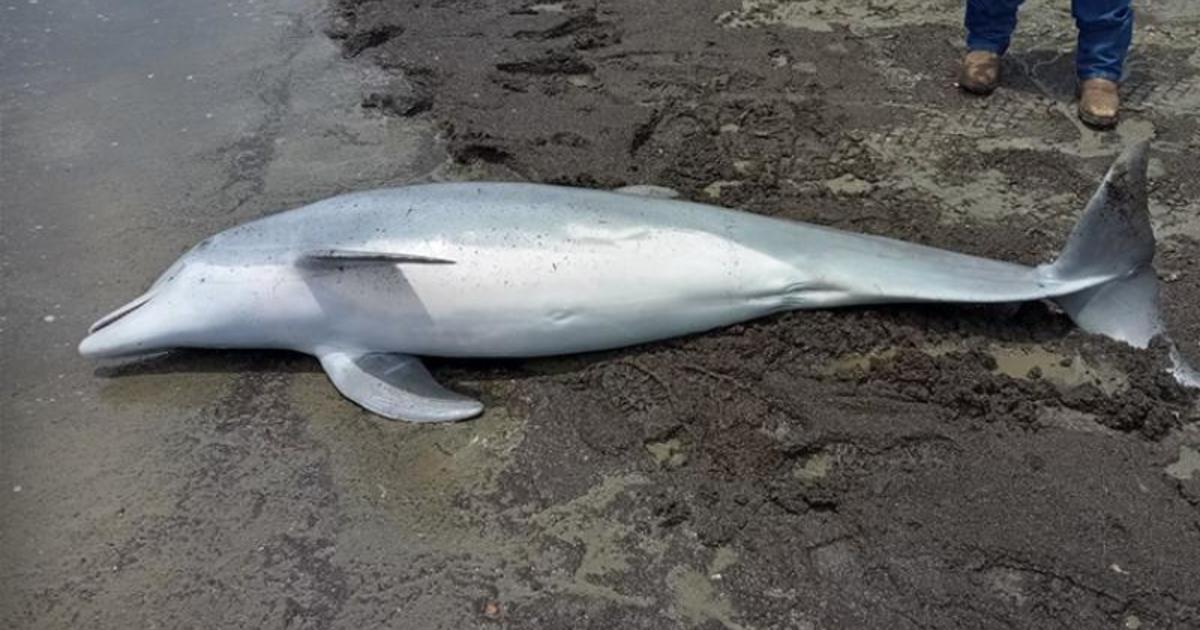Single grain of moon dust from Apollo 17 mission holds millions of years of lunar secrets
It's been almost 50 years since astronauts last set foot on the surface of the moon. But rare rocks from past moon missions are still being analyzed as researchers look for new information about the secrets lying beneath the lunar surface.
For the first time, researchers were able to study a single grain of moon dust from the 1972 Apollo 17 mission to identify details of the moon's composition. They documented the process in a new study published in Meteoritics & Planetary Science.
The technique, called atom probe tomography (APT), allows researchers to analyze tiny amounts of materials — perfect for studying moon samples. The sample from Apollo 17 — the last manned moon mission — contains about 245 pounds of rocks and soil, so researchers need to use it wisely.
"We're analyzing rocks from space, atom by atom," Jennika Greer, the paper's first author and a Ph.D. student at the Field Museum and the University of Chicago, said in a statement Friday. "It's the first time a lunar sample has been studied like this. We're using a technique many geologists haven't even heard of."
Greer's analysis utilized just one single grain of soil, about as wide as a human hair. From that tiny sample, she identified products of space weathering: pure iron, water and helium.
The technique involved using a beam of charged atoms to carve a microscopic, sharp tip — just a few hundred atoms wide — into the surface of the sample. The sample was then placed in an atom probe and zapped with a laser, displacing atoms one by one. Each atom then hit a plate at a certain speed based on its weight. Heavier elements like iron took longer to hit that plate than lighter elements like hydrogen.
The study marks the first time researchers can see both the type of atoms and their exact location in a grain of lunar soil.
APT had never been used to study moon samples until now. The scientists say this technique will help us learn more about both the conditions on the lunar surface and the formation of crucial resources such as water and helium there — resources which could help future astronauts live and work on the moon.
"We can apply this technique to samples no one has studied," said Philipp Heck, a curator at the Field Museum, associate professor at the University of Chicago, and co-author of the paper. "You're almost guaranteed to find something new or unexpected. This technique has such high sensitivity and resolution, you find things you wouldn't find otherwise and only use up a small bit of the sample."
Researchers said the study provides important insight into space weathering, a process undergone by the moon's surface due to its lack of atmosphere. Using APT, scientists can study the differences between weathered moon dirt and unexposed soil beneath the surface.
"Fifty years ago, no one anticipated that someone would ever analyze a sample with this technique, and only using a tiny bit of one grain," Heck states. "Thousands of such grains could be on the glove of an astronaut, and it would be sufficient material for a big study."
Greer and Heck said it's important to obtain new moon samples from varied terrains, especially from the far side of the moon that continually faces away from Earth.
"If you only analyze space weathering from the one place on the moon, it's like only analyzing weathering on Earth in one mountain range," Greer says. "We need to go to other places and objects to understand space weathering in the same way we need to check out different places on Earth like the sand in deserts and outcrops in mountain ranges on Earth."
"Because of something like this, we understand what the environment is like on the moon," Greer said. "It goes way beyond what astronauts are able to tell us as they walk on the moon. This little grain preserves millions of years of history."
It may not be long before NASA has new moon rocks to study. The Artemis program aims to land the first woman and the next man on the lunar surface by 2024.






